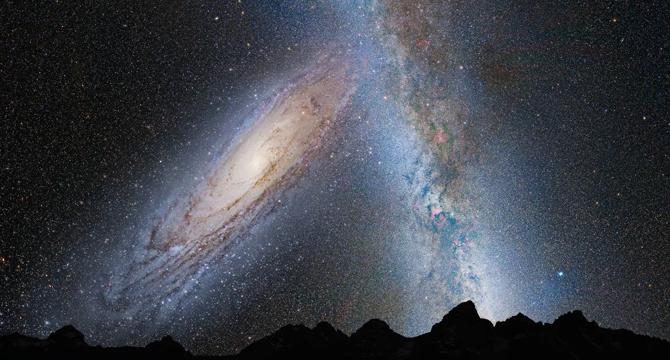Brighter Side of News
1d
7

Image Credit: Brighter Side of News
New data predicts a 50% chance that the Milky Way and Andromeda galaxies will collide
- New research suggests the Milky Way and Andromeda galaxies might not collide as previously believed, with a 50% chance of collision predicted.
- Detailed studies using data from Hubble and Gaia telescopes reveal more uncertainty in the cosmic collision.
- Simulations by researchers incorporate uncertainties and updated data, indicating a broader range of outcomes for the Milky Way-Andromeda interaction.
- The influences of satellite galaxies like M33 and the Large Magellanic Cloud are significant in determining the likelihood of a merger.
- New data reduces the probability of a collision over the next five billion years from near certainty to just 2%.
- Scenarios suggest a possible close encounter followed by a merger or galaxies passing by each other harmlessly in the Milky Way-Andromeda interaction.
- Improved data and upcoming observations are expected to provide more accurate insights into the fate of the two galaxies.
- The simulation results challenge previous assumptions and highlight the sensitivity of these cosmic events to minor variations in measurements.
- While collision avoidance is not guaranteed, the updated simulations offer hope for a different cosmic fate for the Milky Way.
- Galaxies colliding frequently across the universe and uncertainties in our galaxy's destiny emphasize the dynamic nature of the cosmos.
Read Full Article
Like
For uninterrupted reading, download the app